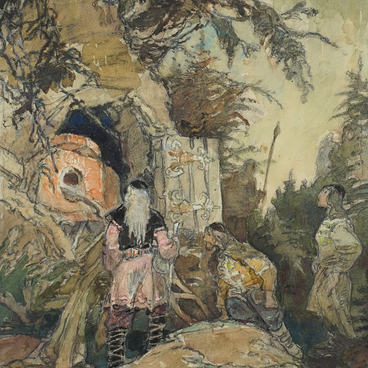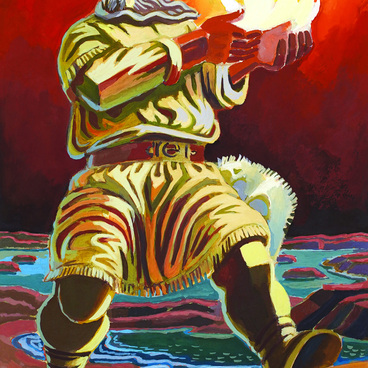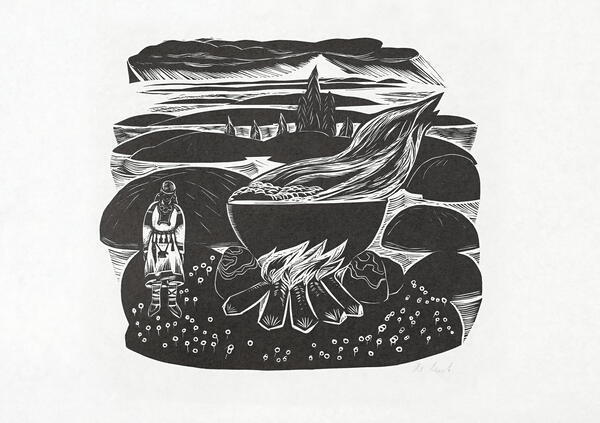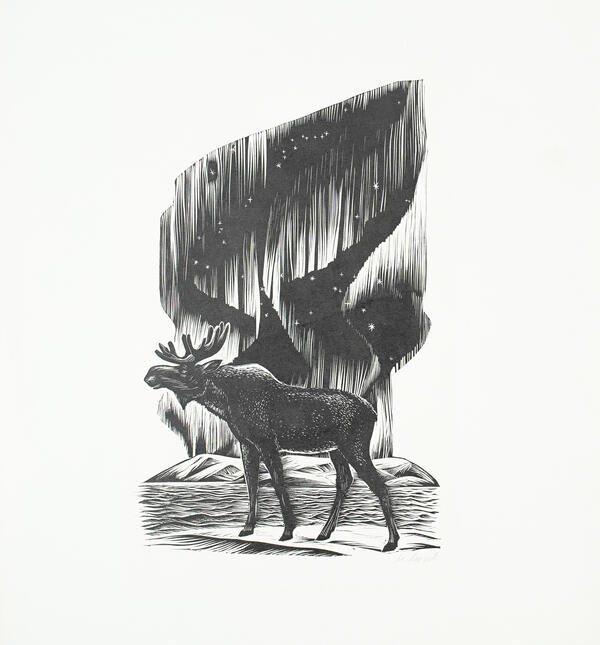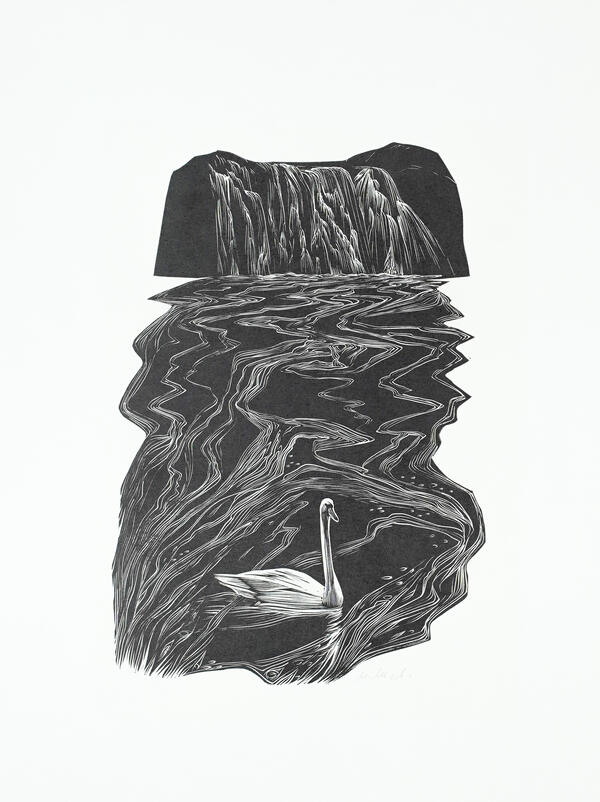Myud Marievich Mechev was a renowned Russian graphic artist, illustrator and landscape painter. He was awarded the title of People’s Artist of the Russian Federation and was a member of the Russian Academy of Arts.
In 1949, Mechev was one of the winners of the all-union competition for illustrations of the “Kalevala”, a compilation of epic poetry from Karelian and Finnish oral folklore. He received the opportunity to independently design one of the editions and created original watercolor illustrations.
His works from the 1950s can be described as an exercise in “socialist realism ethnography”. Mechev deliberately avoided any mythological elements. His Kalevala characters were instead inhabitants of Mechev’s Karelia and his time, rather than the legendary land of Pohyola (Pohjola). This approach can be seen as “naive realism” and, most importantly, this realism is still rooted in a thorough understanding of diverse ethnographic materials.
Among the dense taiga forests, there are villages that were home to the Runic singers. Today, a destination brand called “Villages of Rune Singers” has been established. It includes a number of villages that lie along the path once traveled by Elias Lönnrot during his journeys. These seven villages (Voknavolok, Sudnozero, Pongoma, Pirttiguba, Khaykolya, Yuvalaksha, and Kalevala, or Ukhta) have preserved architectural structures that reflect the lifestyle, customs, and traditions of the Northern Karelians, whose culture was heavily influenced by the tradition of rune singing.
Ancient rune songs were performed on holidays and
during breaks in between hard work. Singers would hold hands and sway, singing,
sometimes competing with one another in skill. This is how Myud Mechev depicted
the rune singers in the picture on display. Here is an excerpt from the
“Kalevala”, compiled by Elias Lönnrot, translated into English by John Martin
Crawford:

